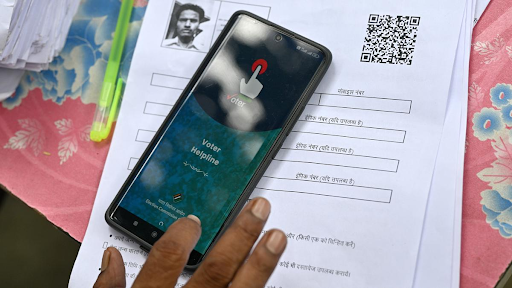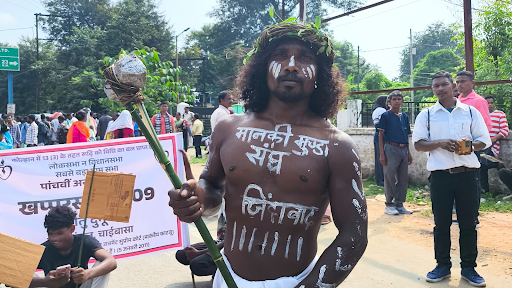Description

Copyright infringement is not intended
Context - In the Rajya Sabha, the Union Ministry of Health and Family Welfare presented a report on the status of healthcare in India.
Details
- The Ministry of Health and Family welfare stated that India’s doctor-population ratio is 1:834.
- The doctor-patient ratio in India is less than the WHO-prescribed norm of 1:1000.
- There are 1,301,319 allopathic doctors registered with state medical councils and the National Medical Commission as of November 2021.
- There are 289,000 registered dentists and 1.3 million allied and healthcare professionals in the country.
- There are 3.3 million registered nursing personnel according to Indian Nursing Council records.
- The nurse-population ratio in the country at present is 1.96 nurses per 1,000 population.
Suggestions to deal with the shortage of medical staff
- Learn from the Tamil Nadu model
- In Tamil Nadu, a Separate Cadre of medical officers is dedicated to Primary Health Care Centres and they are offered incentives to work in the most remote, underserved areas.
- In Tamil Nadu, women with at least 10 years of Schooling trained for 18 months to become village health nurses.
- Learn from Kerala Model
- In Kerala, a Community-led initiative, with Students volunteering to provide home-based Care to people in need and a mobile medical van available for technical support.
- In Kerala, devolution of powers to ensure that Panchayats decided on health-related matters.
- Learn from the Delhi model
- Reduce the Pressure on Secondary and tertiary hospitals by investing in Preventive and Primary Health Care facilities.
- With appropriate bridge Courses, Sound regulatory and licensing mechanisms, Ayush graduates should be given a Chance to help Serve India’s Primary healthcare needs.
- While the government works on increasing the number of MBBS and matching postgraduate seats, we also need to ensure that the current healthcare needs of our population are fulfilled.
- Several Countries have successfully addressed this problem by training non-doctors in basic medicine.
- New System of Community-based trained health workers is needed, who after training Should be equipped to provide the first line of care for acute conditions and to make referrals to a regular doctor.
Healthcare Status in India
- India has the dual burden of both communicable and non-communicable diseases and many of these diseases can be prevented by early diagnosis, providing health education, timely referral and management.
- Nearly 8 lakh cases of cancer are detected each year and around 60-80% of the cases are diagnosed late.
- Lack of awareness and poor health-seeking behaviour have been found to be the major underlying causes of many diseases.
- Inadequate Quality, Accessibility and Affordability of Health Services.
- High out of pocket expenses.
- Shortage of Infrastructure, Equipment and Skilled Manpower.
- Rigid regulatory Framework Combined with Corrupt enforcement.
- Primary Health Care Centres are not Present in many villages and wherever Present they lack basic facilities.
- Inefficiencies in Procurement Process result in both Shortages and Wastage.
- Nearly 70% of Healthcare delivery is through Private Players which are largely regulated.
- Lack of Sanitation, disease Surveillance, Political will and Public Health response.
- Government spend only 1.5% of GDP on Public Health Care.
- Rising incidence of non-Communicable diseases with income growth, lifestyle Changes and environmental degradation, resulting in a rising total burden of disease.
Steps were taken by the Government
- Promotion of Institutional deliveries through Cash incentive under Janani Suraksha Yojana.
- Janani Shishu Suraksha Karyakram: Free ante-natal Check-ups, Post-natal Care and treatment of Sick infants till one year of age.
- Providing Reproductive, Maternal, Newborn, Child and Adolescent Health Services, the establishment of Special Newborn Care Units.
- Mission Indradhnaush: Expanding full immunisation Coverage, the introduction of new vaccines.
- PM Swasthya Suraksha Yojana for strengthening the tertiary health Sector.
- POSHAN Abhiyaan to address Malnutrition.
- Iron and folic acid Supplementation for the Prevention of Anaemia, home visits by ASHAs to promote breastfeeding and promote the use of ORS and Zinc for the management of diarrhoea in children.
- Capacity building of Health Care Providers: Training is being conducted under the National Health Mission to build and upgrade the Skills of Health Care Providers.
- Medical Devices Rules, 2017: Transparent regulatory System, Ensure Safety and quality of medical devices, Allowed 100% FDI in medical devices Sector to Promote Make in India.
- National Health Resource Repository: Create a reliable, unified registry of the Country’s healthcare resources showing the distribution pattern of health facilities and Services between Cities and rural areas. ISRO is a technology Partner for providing data Security.
- Allowed 100% FDI in the Medical devices Sector to promote Make in India.
- Kayakalp initiative to Promote Cleanliness, hygiene and infection control practices in public health facilities.
National Health Policy 2017 targets
- Shifts From communicable to non-communicable diseases.
- Collaborating & regulating the private sector.
- A shift from Sick-care to wellness.
- Increase Life Expectancy at birth from 67.5 to 70 by 2025.
- Reduction of TFR to 2.1 at national and Sub-national levels by 2025.
- Reduce under Five Mortality to 23 by 2025 and MMR from current levels to 100 by 2020.
- Reduce infant mortality rate to 28 by 2019.
- Reduce neonatal mortality to 16 and the stillbirth rate to “single-digit” by 2025.
- Reduce premature mortality from cardiovascular diseases, cancer, diabetes or chronic respiratory diseases by 25% by 2025.
Way Forward
- Reduce the Pressure on Secondary and tertiary hospitals by investing in Preventive and Primary Health Care facilities.
- Focus on Early detection and Prevention.
- Provide adequate protection to doctors.
- Increasing the Doctor-Patient ratio.
- Reduce Out of Pocket Expenditure.
- Increase the number of vaccines under Mission Indradhanush.
- Increasing the number of drugs and medical devices under price control.
- The Ministry Should Standardize the Cost of Certain treatments.
- Raising Public Health expenditure to 2.5% of GDP.
- Provide accessible, affordable and quality health care.
- Inform and educate people about the traditional Systems of medicine.
- Ayurveda Doctors and Yoga Teachers for Rural Areas.
- Improve Hospital access, Health worker density, and Access to essential medicine.
- Mobile Medical Units to Provide outreach Services in rural and remote areas.
https://www.downtoearth.org.in/news/governance/as-told-to-parliament-april-5-2022-india-s-doctor-population-ratio-is-1-834-82236












